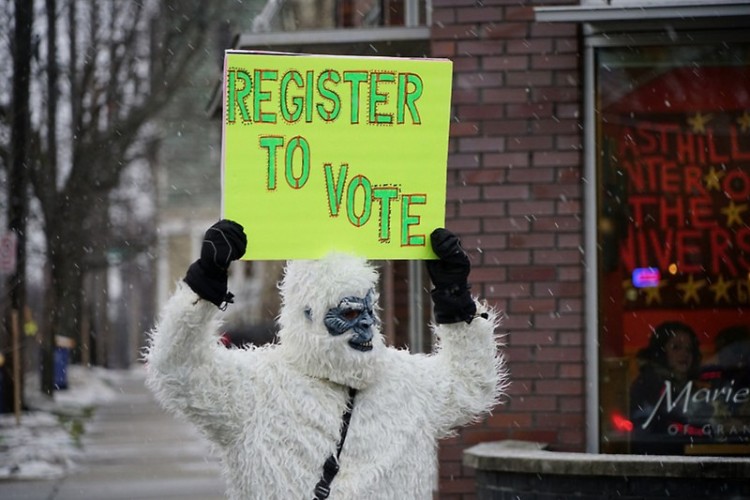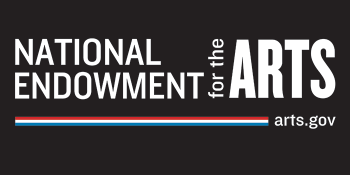Voters in the Grand Rapids area decided vital issues close to home in the last local election election, which included ballot proposals for millions of dollars to improve the quality of public schools as well as new candidates for local office. That election saw a turnout of a mere 7.6 percent of the adult population, with margins as little as 23 votes.
Low turnout hinders a community’s ability to effect political changes that reflect its values and identity. If turnout were above 50 percent, for example, a community could discern that the results reflect the views of a majority of its registered constituents. That just doesn’t happen in these smaller elections.
These are the elections people should be most excited to turn up for, with targeted tax dollars and local leadership on the line. But the data suggests these little-buzzed-about elections are of far less importance to voters than general elections, and the consequences of this apathy and low participation can be dramatic.
In 130 Kent County precincts, 14.46 percent of registered voters showed up at the polls to vote on Nov. 3. The August primary in which Rosalynn Bliss was elected mayor saw a rate of 13.48 percent of voters at the polls in Grand Rapids’ 84 precincts.
This is not just a local problem or a Grand Rapids problem. Among developed countries, the United States ranks among the lowest in voter turnout, although the number of registered U.S. voters is high.
Non-general and local elections suffer consistently from lower turnout rates than elections in which, for example, a governor or president is being decided.
In a statewide vote to increase the sales tax in May 2015, 24.93 percent of voters across Michigan participated. In the 2012 presidential election, the national turnout was 57.5 percent of eligible voters.
Presidential elections tend to yield around 50 to 60 percent voter turnout, and off-year elections closer to around 40 percent. Turnout slides from there.
Incrementally, the less perceived significance of an election, the lower the participation. And the result of low turnout is small margins of victory and defeat, sometimes coming within a handful of votes.
This past November, for example, four area public school districts – Grand Rapids, Kentwood, Kenowa Hills and Wyoming – had multi-million dollar bonding proposals on the ballot. The final tally showed that all four bonds had passed, clearing a path for updates to buildings, new construction projects, enhanced security and technology upgrades that would affect the majority of students in each district.
Kentwood Public Schools made its second attempt at a bond aimed at technology, security and infrastructure upgrades, which passed by over 1,000 votes. The district plans to go ahead with expanding its one-to-one capabilities, which supplies each student with their own device for individualized, hands-on classroom learning.
Despite the original tally, it was later determined that the vote on the Kenowa Hills bonding proposal had been miscalculated.
Kenowa Hills lost its bonding proposal of $55 million by just 23 votes – a bond that would have helped the district implement one-to-one technology and a plethora of other upgrades. Like Kentwood, this was Kenowa Hills’ second attempt this year to pass their proposal.
A handful of uncast votes may easily have determined the fate of learning and safety needs that an entire district’s students will not be receiving.
Turnout in Kenowa Hills precincts was not even among the lowest in voting percentage across Kent County. In a Grand Rapids 1st Ward precinct, 45 of 1,607 voters showed up. That’s 2.8 percent.
Low turnout can be linked to voter apathy, which affects all elections.
When it comes to national elections, there is a prevailing sense that the process is “rigged” because of the influence held by corporate donors. Unlimited shadow money, funneled into super PACs by large corporations, can be donated to campaigns without the donors being identified.
In the 2010 Supreme Court case Citizens United v. Federal Elections Commission (FEC), the court ruled that the First Amendment protects the right of for-profit institutions to unlimited spending in politics.
Many feel that money has corrupted the political process and hijacked free speech. But on the local level, the problem is people – not corporations.
In local elections, with big money out of the equation, the problem isn’t some nefarious greed machine. It’s the electorate. It’s measurable voter apathy: a sense that elections are trivial; that they don’t matter.
The suggestion that voting should be required may infringe on voting rights and even free speech, but there have to be more middle-of-the-road solutions that can increase participation. Is a national holiday in order? Should there be stronger incentives to get people to the polls? The question must be answered: what’s in it for me, the voter?
People tend not to see the immediate impact of election results, and the process makes them feel disenchanted. They lack an incentive – a good reason – to show up and vote. A tug toward participation has to come from somewhere. Awareness alone just won't get the job done.
Social media activity is one gauge of public interest in politics. Posts, shares, likes and retweets signal a general level of participation and awareness that is currently robust in American culture, and would be impossible in any previous generation. The trick to raising turnout may be in simplifying or diversifying the voting format to bridge the gap between clicks and the voting booth -- between interest and action.
Local and national elections require essentially the same level of commitment. The latter tend to swoon and captivate the national imagination as the candidates transfix, through the funhouse mirrors of media networks, a steely eyed gaze toward the Oval Office. Many American feel prideful on Election Day. They played a part in a larger narrative, perhaps altered the course of history.
Individuals have even greater power over the democratic process on the local level, but the flaws of the system and the problem of voter apathy are also amplified. A close presidential election falls within hundreds of thousands of votes, but on the local level an issue can live or die by just 23.
The Rapidian, a program of the 501(c)3 nonprofit Community Media Center, relies on the community’s support to help cover the cost of training reporters and publishing content.
We need your help.
If each of our readers and content creators who values this community platform help support its creation and maintenance, The Rapidian can continue to educate and facilitate a conversation around issues for years to come.
Please support The Rapidian and make a contribution today.

